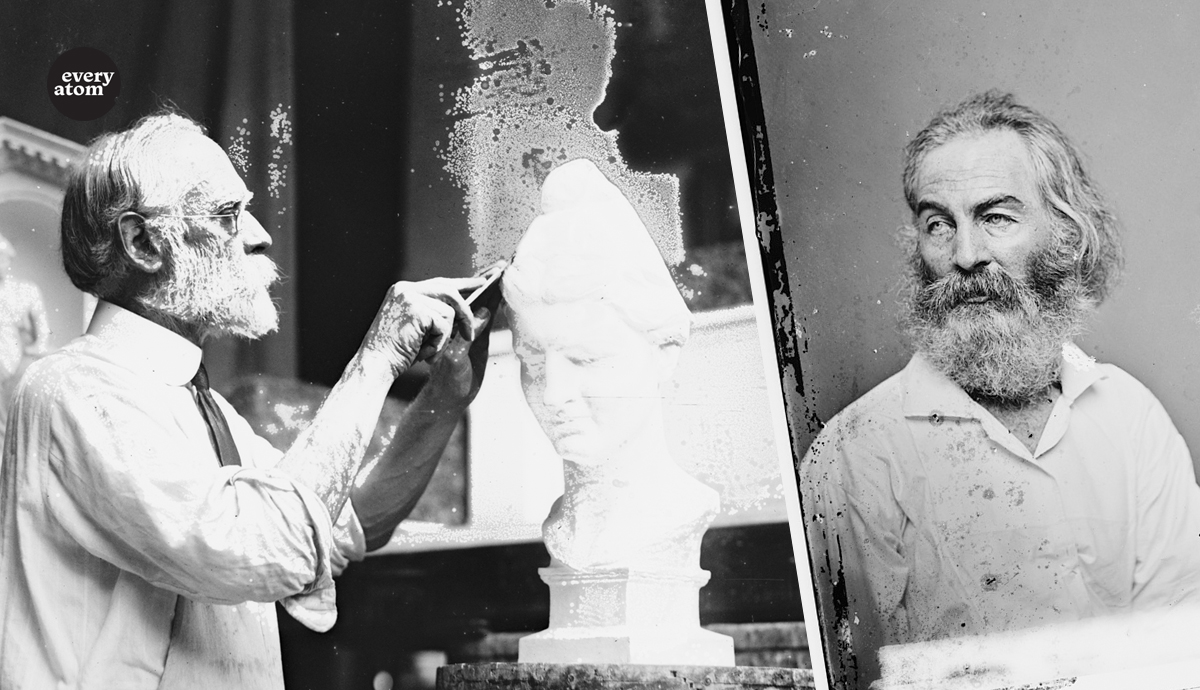Every Atom | No. 148
Introduction to Every Atom by project curator Brian Clements
As early as the 1840s Whitman began focusing attention on the range and significance of the visual arts in an open and democratic society. In his early journalistic writing he explains that he derived as much joy from the western scenes of painter and collector George Catlin as from the landscapes of his friend, JesseTalbot, or the daguerrean portraits of gallery owner John Plumbe or the sculpture of Henry Kirke Brown in whose Brooklyn studio he proudly declared himself “one among the wellbeloved stonecutters” (LG 1855, Preface). In addition, Whitman, makes no distinction between a fine painting displayed in an art gallery and an engraved image encountered in a book or magazine. Flowers and botanical prints, along with the colorful fashion plates that enhanced the pages of Godey’s Lady’s Book, inspire a similar response of pleasure and delight.
Whitman contrasts this wide-eyed interest in the broadest range of visual culture with that of the connoisseur, a cultural gatekeeper charged with preserving standards and maintaining the influence of the cultural elite. Whitman’s critique focuses particular attention on the connoisseur’s eyes and by extension his mind as he scrutinizes the visual offerings in the gallery, a space traditionally associated with the vestiges of high culture. Not coincidentally, Whitman’s searing portrayal of this purveyor of elite culture is both intensely visual and focused on the power of sight. The connoisseur’s squinty eyes and averted gaze convey the sense of an overly restrictive, even hostile, arbiter of the public taste, not someone open to and encouraging personal exploration. Using his own catholic interests as a starting point, Whitman rejects the authority vested in the connoisseur while seeking to stimulate the personal authority of the individual. Art, however it might be identified or appreciated, was to be strengthened, not suppressed, and, over the years, Whitman would continue to advocate strongly for a broad and democratic art, one that would nurture the lives of all members of the populace, not just those who frequented the nation’s art galleries.
Recommended
Nor’easter
Post-Op Appointment With My Father
Cedar Valley Youth Poet Laureate | Fall 2024 Workshop







